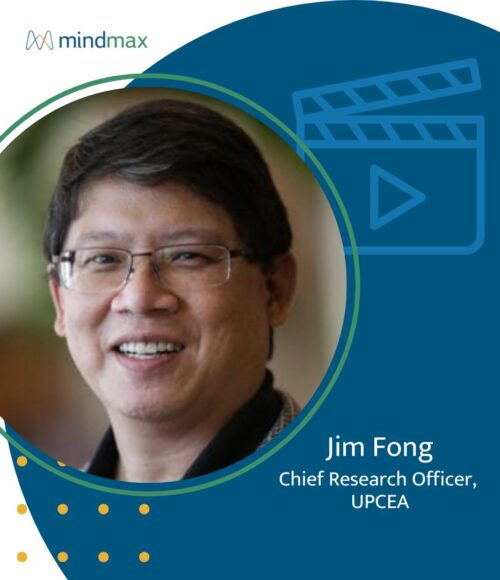Successful Higher Education Marketing Engagements Begin with Realistic Expectations

Successful Higher Education Marketing Engagements Begin with Realistic Expectations
When a college enlists a partner to support their marketing efforts and grow enrollments, both parties begin the relationship with great hope for mutual success. But all too often, these engagements fall short—in terms of performance, timeline, or the nature of the relationship itself—and leave all sides disappointed and dissatisfied.
This unfortunate reality points to a foundational truth about digital marketing and enrollment initiatives: Success begins with setting realistic expectations for growth, relationships, execution, and timelines.
At MindMax, we help the nation’s top colleges and universities launch new programs, increase enrollments, and position existing programs to reach a broader pool of prospective students.
Every school wants to grow—that’s a given. But we start each engagement by getting to the heart of a school’s need for our services. From there, we determine a realistic approach to setting—and meeting—enrollment goals.
Expectations for Engaging With a Higher Ed Marketing Firm
Expectations for growth
The adage “if nothing changes, nothing changes,” is particularly relevant in discussions around a college’s goal-setting and growth targets. If a school wants to realize enrollment growth year over year, they must make a deliberate change in their marketing and enrollment tactics.
Bringing on a higher education marketing agency isn’t an automatic fast-track to growth. The marketing partner must incorporate new strategies and tactics to support an increase in enrollment—and set realistic expectations about what is required to achieve those aims.
More isn’t always better, and moving faster won’t necessarily help you reach your goals more quickly. Here’s a gardening metaphor to illustrate the point: If you plant a young tree, you can only get it to grow so fast. Adding the right amount of fertilizer can support the tree’s growth, but if you try to add more fertilizer to speed up the process, you’ll be unsuccessful—and you may do more harm than good in the process.
Expectations for relationships
After setting a baseline for projected growth, colleges and marketing partners must establish expectations for their relationship. Both parties need to be open about motives, capabilities, and adaptability.
On the marketing partner’s side, this transparency might look like a smaller organization being forthcoming about its resource capacity or a larger organization acknowledging that its set models may not be agile enough to meet a school’s needs.
On the other hand, colleges must be realistic about their own capacity to manage growth. They should assess their resources to determine if they have what it takes to support a larger enrollment funnel and, more importantly, deliver the curriculum itself.
As the engagement continues, the marketing partner should identify if an engagement is veering off track and make necessary corrections. Schools need to clearly communicate any changes that could impact results (e.g., website updates, updates in scheduling for intake periods, holiday intercession). This process needs to occur through an iterative, open dialogue, with regular check-ins and adjustments.
Expectations for execution
When setting expectations for the execution of higher education marketing and enrollment activities, it helps to consider the Rule of 35. This standard dictates that once everyone has made their most prudent projections, the timeline will take 35% longer, the results will be 35% less, and the cost will be 35% more than predicted.
The Rule of 35 doesn’t mean anyone is performing poorly or failing to hold up their side of the engagement. Rather, it takes into account the inevitable friction that occurs during marketing and enrollment initiatives.
At MindMax, one of our core values is to build meaningful relationships, which we know from experience are healthier and more functional than purely transactional ones. Relationships grow when both parties work together to reach the other side of challenges and conflicts.
Expectations for timeline
When schools have unrealistic expectations about the timeline of an engagement, they inevitably end up disappointed. In the spirit of full transparency, here’s an idea of how long MindMax engagements take to get up and running from the time of kickoff:
Advisory engagement: 30-60 days (for a strategic plan deliverable)
Digital marketing engagement: 30-60 days
Enrollment services engagement: 30-45 days
To evaluate the success of a higher education marketing engagement, we look for incremental data points that serve as performance indicators, develop and test a hypothesis, and pivot our strategy as needed. We are thoughtful and deliberate with a school’s investment in their enrollment funnel. During this highly iterative period, we test and optimize to determine how to strategically allocate ad spend, refine messaging, and reach target audiences most effectively.
Schools can expect to see results—ultimately measured by an increase in student enrollments—at different times, depending on factors like program type and the length of the prospective student journey. The consideration phase for a non-credit certificate is approximately 30-90 days, but for a master’s program, it can be up to 18 months.
As a mission-aligned organization, we succeed when our partner schools do. We practice honesty and transparency by setting realistic expectations to ensure that both sides feel good about an engagement. Contact us today to learn more about how we can help your school reach its enrollment goals.
Related Ideas
UPCEA’s Jim Fong Wants More Flexible Learning Pathways

